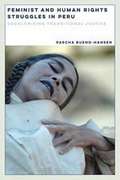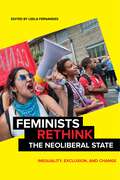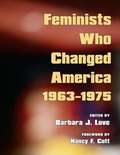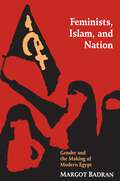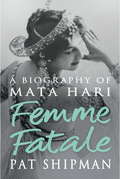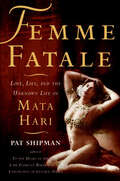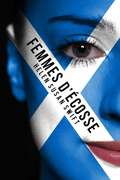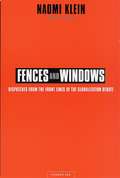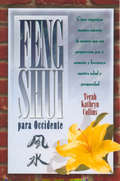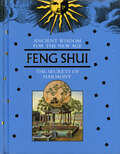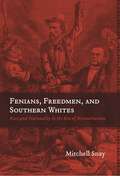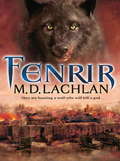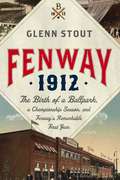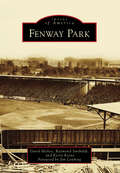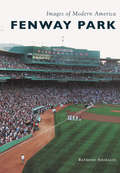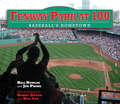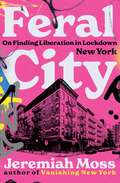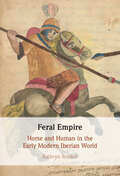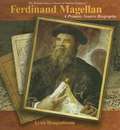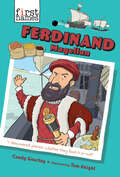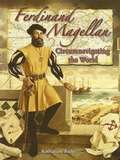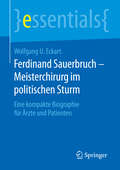- Table View
- List View
Feminist and Human Rights Struggles in Peru: Decolonizing Transitional Justice
by Pascha Bueno-HansenIn 2001, following a generation of armed conflict and authoritarian rule, the Peruvian state created a Truth and Reconciliation Committee (TRC). Pascha Bueno-Hansen places the TRC, feminist and human rights movements, and related non-governmental organizations within an international and historical context to expose the difficulties in addressing gender-based violence. Her innovative theoretical and methodological framework based on decolonial feminism and a critical engagement with intersectionality facilitates an in-depth examination of the Peruvian transitional justice process based on field studies and archival research. Bueno-Hansen uncovers the colonial mappings and linear temporality underlying transitional justice efforts and illustrates why transitional justice mechanisms must reckon with the societal roots of atrocities, if they are to result in true and lasting social transformation. Original and bold, Feminist and Human Rights Struggles in Peru elucidates the tension between the promise of transitional justice and persistent inequality and impunity.
Feminists Rethink the Neoliberal State: Inequality, Exclusion, and Change
by Leela FernandesA rich set of feminist perspectives on the varied and often contradictory nature of state practices, structures, and ideologies Growing socio-economic inequality and exclusion are defining features of the twenty-first century. While debates on globalization, free trade, and economic development have been linked to the paradigm of “neo-liberalism,” it does not explain all the forms of social change that have been unfolding in comparative contexts. Feminists Rethink the Neoliberal State provides a timely intervention into discussions about the boundaries, practices, and nature of the post-liberalization state, suggesting that an understanding of economic policies, the corresponding rise of socio-economic inequality, and the possibilities for change requires an in-depth reconceptualization.Drawing on original field research both globally and within the United States, this volume brings together a rich set of perspectives on the varied and often contradictory nature of state practices, structures and ideologies in the post-liberalization era. The essays develop an interdisciplinary approach that treats an understanding of historically-specific forms of inequality—such as gender, race, caste, sexuality and class—as integral to, rather than as after-effects of, the policies and ideologies associated with the “neoliberal project.” The volume also tackles central questions on the restructuring of the state, the state’s power operations, the relationship between capital and the state, and its interactions with the institutions and organizational forms of civil society in the post-liberalization era. As such, Feminists Rethink the Neoliberal State examines both what is distinctive about this post-liberalization state and what must be contextualized as long-standing features of modern state power. A truly international and interdisciplinary volume, Feminists Rethink the Neoliberal State deepens our understanding of how policies of economic liberalization shape and produce various forms of inequality.
Feminists Who Changed America, 1963-1975
by Nancy F. Cott Barbara J. LoveDocumenting key feminists who ignited the second wave women's movement Barbara J. Love's Feminists Who Changed America, 1963-1975 will be the first comprehensive directory to document many of the founders and leaders (including both well-known and grassroots organizers) of the second wave women's movement. It tells the stories of more than two thousand individual women and a few notable men who together reignited the women's movement and made permanent changes to entrenched customs and laws. The biographical entries on these pioneering feminists represent their many factions, all parts of the country, all races and ethnic groups, and all political ideologies. Nancy Cott's foreword discusses the movement in relation to the earlier first wave and presents a brief overview of the second wave in the context of other contemporaneous social movements.
Feminists, Islam, and Nation: Gender and the Making of Modern Egypt
by Margot BadranThe emergence and evolution of Egyptian feminism is an integral, but previously untold, part of the history of modern Egypt. Drawing upon a wide range of women's sources--memoirs, letters, essays, journalistic articles, fiction, treatises, and extensive oral histories--Margot Badran shows how Egyptian women assumed agency and in so doing subverted and refigured the conventional patriarchal order. Unsettling a common claim that "feminism is Western" and dismantling the alleged opposition between feminism and Islam, the book demonstrates how the Egyptian feminist movement in the first half of this century both advanced the nationalist cause and worked within the parameters of Islam.
Femme Fatale: Love, Lies And The Unknown Life Of Mata Hari
by Pat ShipmanBiography of the most infamous woman of the early 20th century, the Dutch courtesan and alleged spy Margaretha Zelle (1876-1917), - Mata HariMata Hari was the prototype of the beautiful but unscrupulous female agent who used sexual allure to gain access to secrets, if she was indeed a spy. In 1917, the notorious dancer Mata Hari was arrested, tried, and executed for espionage. It was charged at her trial that the dark-eyed siren was responsible for the deaths of at least 50,000 gallant French soldiers. Irrefutably, she had been the mistress of many senior Allied officers and government officials, even the French Minister of War: a point viewed as highly suspicious. Worse yet, she spoke several European languages fluently and travelled widely in wartime Europe. But was she guilty of espionage?For all the publicity Mata Hari and her trial received, key questions remain unanswered. These questions concern not only her inadequate trial and her unproven guilt, but also the events in her personal life. What propelled Margaretha Zelle, destined to be a Dutch schoolteacher, to transform herself into Mata Hari, the most desirable woman in early 20th-century Paris? She danced before enthusiastic crowds in Paris, Berlin, Vienna, Madrid, Monte Carlo, Milan and Rome, inspiring admiration, jealousy, and bitter condemnation.Pat Shipman's brilliant biography pinpoints the powerful yet dangerous attributes that evoked such strong emotions in those who met Mata Hari, for hitherto the focus has been on espionage, not on exploring the events that shaped her life and caused her to transform herself from rural Dutch girl to international femme fatale.
Femme Fatale: Love, Lies, and the Unknown Life of Mata Hari
by Pat Shipman“An engrossing biography” of the Dutch exotic dancer accused of being a spy for the Germans during World War I.In 1917, the notorious Oriental dancer Mata Hari was arrested on the charge of espionage; less than one year later, she was tried and executed, charged with the deaths of at least 50,000 gallant French soldiers. The mistress of many senior Allied officers and government officials, even the French minister of war, she had a sharp intellect and a golden tongue fluent in several languages; she also traveled widely throughout war-torn Europe, with seeming disregard for the political and strategic alliances and borders. But was she actually a spy? In this persuasive new biography, Pat Shipman explores the life and times of the mythic and deeply misunderstood dark-eyed siren to find the truth.Praise for Femme Fatale“Her life’s story is a humdinger.” —Washington Post Book World“Pat Shipman reasons (and writes) like a born counterintelligence officer. Her gripping and well-developed account of the famed spy . . . will fascinate you right down to her grim imprisonment and hast execution in a desolate field outside Paris, her last performance faced, as were all of her life’s twists and turns, with bravery and grace.” —Peter Earnest, Executive Director, International Spy Museum, Washington, D.C., and former CIA Operations Officer
Femmes d’Écosse
by Helen Susan Swift Nicolas FrebillotFemmes d’Écosse est un voyage à travers le temps à la découverte de ces femmes qui ont fait l’histoire de leur pays. Des plus humbles aux plus grandes, les écossaises ont été sur le devant de la scène et en arrière-plan des principaux événements de leur pays. Voici les pêcheuses, les guerrières, les écrivains, les jacobites, les martyres et les ouvrières. Sans elles, l’Écosse ne serait pas l’Écosse. Rejoignez cette formidable épopée à travers les Âges Sombres et ce XXIème siècle et découvrez qui fut la force motrice de cette petite mais dynamique nation.
Fences and Windows: Dispatches from the Front Lines of the Globalization Debate
by Naomi KleinIn Fences and Windows, Naomi Klein offers a bird's-eye view of the life of an activist and the development of the anti-globalization movement from the Seattle World Trade Organization protests in 1999 through September 11, 2001. Bringing together columns, speeches, essays, and reportage, Klein once again provides provocative arguments on a broad range of issues. Whether she is discussing the privatization of water; genetically modified food; free trade; or the development of the movement itself and its future post 9/11, Naomi Klein is one of the most thoughtful and brilliant activists and thinkers for a new generation.
Fences, Gates and Garden Houses: A Book of Designs with Measured Drawings (Dover Architecture)
by Carl F. SchmidtA treasure trove of measured drawings and photographs, this volume depicts wood fences, gates, and small garden houses of New England. Several of these elegantly detailed constructions were built between the Revolutionary War and 1825, and many of them no longer exist. Restorationists and preservationists will find this collection a valuable resource.
Feng Shui para Occidente
by Terah Kathryn CollinsFeng Shui teacher Terah Kathryn explains why the arrangement of readers' homes and workplaces affects every aspect of their lives, including relationships, health, and finances. This informative text takes readers on a step-by-step journey through their home and office, opening their "Feng Shui eyes" to see the problems and the solutions in their environment.
Feng Shui: The Secrets of Harmony (Ancient Wisdom for the New Age)
by Sonya HwangGain prosperity, tranquility, and better health through the ancient practice of Feng Shui with this illustrated, introductory guide. Today, the notion that our well-being is influenced by the atmosphere of a place is widely accepted. The ancient Chinese developed this notion into a profoundly spiritual practice that decided everything from building design to furniture arrangement. This work explains how Feng Shui can help us improve our lives and fortunes by making changes to our living spaces. It discusses how feng shui can be used to promote self-awareness, positive health, and personal happiness, whether at work or in the home.
Fenians, Freedmen, and Southern Whites: Race and Nationality in the Era of Reconstruction (Conflicting Worlds: New Dimensions of the American Civil War)
by Mitchell SnayAfter the American Civil War, several movements for ethnic separatism and political self-determination significantly shaped the course of Reconstruction. The Union Leagues mobilized African Americans to fight for their political rights and economic security while the Ku Klux Klan used intimidation and violence to maintain the political and economic hegemony of southern whites. Founded in 1858 as the Irish Revolutionary Brotherhood, the Irish American Fenians sought to liberate Ireland from English rule. In Fenians, Freedmen, and Southern Whites, Mitchell Snay provides a compelling comparison of these seemingly disparate groups and illuminates the contours of nationalism during Reconstruction. By joining the Fenians with freedpeople and southern whites, Snay seeks to assert their central relevance to the dynamics of nationalism during Reconstruction and offers a highly original analysis of Reconstruction as an Age of Capital and an Age of Emancipation where categories of race, class, and gender -- as well as nationalism -- were fluid and contested.
Fenrir
by M.D. LachlanThe Vikings are laying siege to Paris. As the houses on the banks of the Seine burn a debate rages in the Cathedral on the walled island of the city proper. The situation is hopeless. The Vikings want the Count's sister, in return they will spare the rest of the city. Can the Count really have ambitions to be Emperor of the Franks if he doesn't do everything he can to save his people? Can he call himself a man if he doesn't do everything he can to save his sister?His conscience demands one thing, the demands of state another. The Count and the church are relying on the living saint, the blind and crippled Jehan of St Germain, to enlist the aid of God and resolve the situation for them.But the Vikings have their own gods. And outside their camp a terrifying brother and sister, priests of Odin, have their own agenda. An agenda of darkness and madness. And in the shadows a wolfman lurks.M.D. Lachlan's stunning epic of mad Gods, Vikings and the myth of Fenrir, the wolf destined to kill Odin at Ragnarok, powers forward into new territories of bloody horror, unlikely heroism, dangerous religion and breathtaking action.
Fenrir (The Wolfsangel Cycle)
by LachlanThe Vikings are laying siege to Paris. They want the Count's sister, in return they will spare the rest of the city. As houses on the banks of the Seine burn, a debate rages in the Cathedral on the walled island of the city proper. Can the Count really have ambitions to be Emperor of the Franks if he doesn't do everything he can to save his people? Can he call himself a man if he doesn't do everything he can to save his sister? His conscience demands one thing, the state demands another. The Count and the church are relying on the living saint, the blind and crippled Jehan of St. Germain, to enlist the aid of God and resolve the situation for them. But the Vikings have their own gods, and outside their camp, a terrifying brother and sister, priests of Odin, have their own agenda. An agenda of darkness and madness. And in the shadows a wolfman lurks. M. D. Lachlan's stunning epic of mad Gods, Vikings, and the myth of Fenrir, the wolf destined to kill Odin at Ragnarok, is a compelling mix of bloody horror, unlikely heroism, dangerous religion, and breathtaking action.
Fenway 1912: The Birth of a Ballpark, a Championship Season, and Fenway's Remarkable First Year
by Glenn Stout"After one hundred years, each time you walk up the ramp from beneath the stands and out toward that sea of sunlit grass, Fenway Park remains the most special kind of place there is, a place that can still change your life."In anticipation of the one hundredth anniversary of America's most beloved ballpark, the untold story of how Fenway Park came to be and its remarkable first season. 1912 was a leap year, the year the Titanic sank, and it was also the year baseball's original shrine, the one and only Fenway Park, was born. While the paint was still drying, the infield grass still coming in, the Red Sox embarked on an unlikely season that culminated in a World Series battle against the Giants that stands as one of the greatest ever played.Fenway 1912 tells the incredible story of Fenway, from the unorthodox blueprint that underlies the park's notorious quirks, to the long winter when locals poured concrete and erected history, to the notorious fixers who then ruled the game, to the ragtag team who delivered a world championship, Fenway's first.For all that has been written in tribute to the great Fenway Park, no one has ever really told the behind-the-scenes true story of its tumultuous yet glorious first year. Drawing on extensive new research, the esteemed baseball historian Glenn Stout delivers an extraordinary tale of innovation, desperation, and perspiration - capturing Fenway as never before.
Fenway Park (Images of America)
by David Hickey Kerry Keene Raymond Sinibaldi Jim LonborgFive days after the sinking of the Titanic, Boston's Fenway Park held its grand opening. Since that day, millions have witnessed the Red Sox play baseball. Their "Royal Rooters" evolved into the "Fenway Faithful" and are now commonly referred to as "Red Sox Nation." Nine World Series have been staged upon Fenway's turf, along with three Major League All-Star Games. Aside from baseball, Fenway has been host to professional and amateur football games, ice hockey, basketball, soccer, lacrosse, hurling, boxing and wrestling matches, and even a circus. Music from concerts has reverberated across its lawn, religious services have been held, and political rallies staged--all adding patches to the quilt of Fenway's rich, illustrious history. The structure that noted author John Updike referred to many decades ago as "a lyric little band box" has become one of New England's most beloved historical landmarks.
Fenway Park (Images of Modern America)
by Raymond SinibaldiIn June 1967, Red Sox owner Tom Yawkey declared Fenway Park outdated and stated that without help from the city for a new ballpark, he would consider moving his team. That same year, an impossible dream came true as the 100-1 underdog Red Sox won the pennant and a record-setting 1.7 million fans visited Fenway. Since then, approximately 110 million fans have watched the Red Sox play at what is now called "America's Most Beloved Ballpark." While Fenway Park was once known for simply resembling a warehouse, its nearby streets now hold a baseball festival every game. Those festivals have grown to include concerts, hockey, soccer, and high school football. The exterior walls of the park extoll the accomplishments of each Red Sox World Championship team and fly the banners of Red Sox Hall of Famers since the team's birth in 1901. Red Sox bronzed immortals stand watch at the entrance to Gate B.
Fenway Park at 100
by Jim Prime Bill Nowlin Bobby DoerrOn April 20, 1912, The Boston Red Sox played their first official game at Fenway Park. 27,000 fans were on hand to witness the Red Sox defeat the rival New York Highlanders--later known as the Yankees--7-6 in 11 innings. It was an event that may have made front page news in Boston had it not been for the sinking of the Titanic five days earlier.Since that day, the oddly-shaped stadium at 4 Yawkey Way has played host to nearly 8,000 Red Sox games, including fifty-five in the postseason, launching the legends of Tris Speaker, Jimmie Foxx, Ted Williams, Carl Yastrzemski, Jim Rice, Wade Boggs, and Pedro Martinez, and making the ballpark a worldwide destination for legions of baseball fans in the process.From the Green Monster to Pesky's Pole, The Triangle to the lone red seat marking the longest home run ever hit in the stadium (a 502-foot blast off the bat of Ted Williams in 1946), Fenway Park's unique charms have captivated generations of sports fans.100 Years of Fenway Park tells through vivid, full-color photographs and illuminating prose, the story of the most cherished American stadium, creating an endearing portrait of a building whose rich history resonates in the hearts and minds of the Red Sox vast fanbase. With a special foreword by Red Sox legend Carl Yastrzemski, this is a book that no Red Sox fan should be without.
Feral City: On Finding Liberation In Lockdown New York
by Jeremiah MossWhat happens when an entire social class abandons a metropolis? This genre-bending journey through lockdown New York offers an exhilarating, intimate look at a city returned to its rebellious spirit. The pandemic lockdown of 2020 launched an unprecedented urban experiment. Traffic disappeared from the streets. Times Square fell silent. And half a million residents fled the most crowded city in America. In this innovative and thrilling book, author and social critic Jeremiah Moss, hailed as “New York City’s career elegist” (New York Times), explores a city emptied of the dominant class—and their controlling influence. “Plagues have a disinhibiting effect,” Moss writes. “As the normal order is suspended, the repressive force of civilization lifts and our rules fall away, shifting the boundaries of society and psyche.” In public spaces made vibrant by New Yorkers left behind, Moss experienced an uncanny time warp. Biking through deserted Manhattan, he encountered the hustlers, eccentrics, and renegades who had been pressed into silence and invisibility by an oppressive, normative gentrification, now reemerging to reclaim the city. For one wild year the streets belonged to wandering nudists and wheelie bikers, mystical vagabonds and performance artists working to disrupt the status quo, passionate activists protesting for Black lives—along with the everyday New Yorkers who had been pushed to the margins for too long. Participating in a historic explosion of activism, resistance, and spontaneity, from queer BLM marches to exuberant outdoor dance parties, Moss discovered an intoxicating freedom. Without “hyper-normal” people to constrain it, New York became more creative, connected, humane, and joyful than it had been in years. Moss braids this captivating narrative with an account of his renewed sense of place as a transgender man, weaving together insights from psychoanalysis, literature, and queer theory. A kaleidoscopic vision of a city transformed, Feral City offers valuable insight into the way public space and the spaces inside us are controlled and can be set free.
Feral Empire: Horse and Human in the Early Modern Iberian World
by Kathryn RentonBy tracing the dramatic spread of horses throughout the Americas, Feral Empire explores how horses shaped society and politics during the first century of Spanish conquest and colonization. It defines a culture of the horse in medieval and early modern Spain which, when introduced to the New World, left its imprint in colonial hierarchies and power structures. Horse populations, growing rapidly through intentional and uncontrolled breeding, served as engines of both social exclusion and mobility across the Iberian World. This growth undermined colonial ideals of domestication, purity, and breed in Spain's expanding empire. Drawing on extensive research across Latin America and Spain, Kathryn Renton offers an intimate look at animals and their role in the formation of empires. Iberian colonialism in the Americas cannot be explained without understanding human-equine relationships and the centrality of colonialism to human-equine relationships in the early modern world. This title is part of the Flip it Open Program and may also be available Open Access. Check our website Cambridge Core for details.
Ferdinand II, Counter-Reformation Emperor, 1578-1637
by Robert BireleyEmperor Ferdinand II (1619–37) stands out as a crucial figure in the Counter-Reformation in central Europe, a leading player in the Thirty Years War, the most important ruler in the consolidation of the Habsburg monarchy, and the emperor who reinvigorated the office after its decline under his two predecessors. This is the first biography since a long-outdated one written in German in 1978 and the first ever in English. It looks at his reign as territorial ruler of Inner Austria from 1598 until his election as emperor and especially at the influence of his mother, the formidable Archduchess Maria, in order to understand his later policies as emperor. This book focuses on the consistency of his policies, the profound influence of religion throughout his career and follows the contest at court between those who favored consolidation of the Habsburg lands and those who aimed for expansion in the empire.
Ferdinand Magellan (A Primary Source Biography)
by Lynn HoogenboomThis book traces the life and exploits of the Portuguese explorer who sailed under the Spanish flag, challenged mutinies and located a waterway between the South American continent and the island at its southern tip, providing quicker passage to the Pacific
Ferdinand Magellan (The First Names Series)
by Candy GourlayAn illustrated biography of the famous explorer with “plenty of engaging action scenes and historical facts” (School Library Journal). Before he led the first expedition to circumnavigate the Earth, Ferdinand Magellan (1480–1521) was a Portuguese noble who loved the sea. A skilled sailor, he led a number of voyages and is known for his incredible navigation skills. Over the course of his sailing career, he faced terrible storms and mutinies but always managed to get his crew home safely. He set off with his crew to circle the globe—a trip that no other ship had ever completed. Though Magellan died in combat in the Philippines before he could complete the voyage, his ship went on to complete the first circumnavigation of the world, and he is still known as one of the greatest explorers. However, as historians today note, many of the places that Magellan “discovered” already had people living there, and his fame is one rooted in colonialism. Ferdinand Magellan tackles the legacy—both good and bad—of this famous explorer.First Names is a highly illustrated nonfiction series that puts young readers on a first-name basis with some of the most incredible people in history and of today!
Ferdinand Magellan: Circumnavigating the World (In the Footsteps of Explorers)
by Katharine BaileyDiscusses the journey undertaken by Ferdinand Magellan and his five ship armada in an attempt to find a western route to the Indies, which ended up being the first fleet to circumnavigate the globe.
Ferdinand Sauerbruch - Meisterchirurg im politischen Sturm: Eine kompakte Biographie für Ärzte und Patienten (essentials)
by Wolfgang U. EckartWolfgangU. Eckart setzt sich vornehmlich mit dem politischen Sauerbruch - oder besser:der politischen Selbstinszenierung des gro#65533;en Chirurgen - im Wandel derSysteme, die seinen Lebensweg begleiteten, auseinander. Insbesondere die #65533;berweite Strecken von seinem Ghostwriter konstruierte, teilweise erfundene,Autobiographie' ,,Das war mein Leben" hat dem Publikum zusammen mit dem aufihrer Grundlage entstandenen Spielfilm einen idolhaften Artztypus vorgehalten,der m#65533;glicherweise f#65533;r mindestens eine ganze Generation junger Medizinervorbildhaft wirkte. Aber Sauerbruch entsprach diesem entworfenen Bild nicht. Erhat sich auf eine bisweilen schwer verst#65533;ndliche, bisweilen sogar unertr#65533;glicheWeise mit den jeweiligen politischen Machthabern arrangiert und gleichzeitigimmer wieder auch Ambivalenzen und Br#65533;che offenbart.
